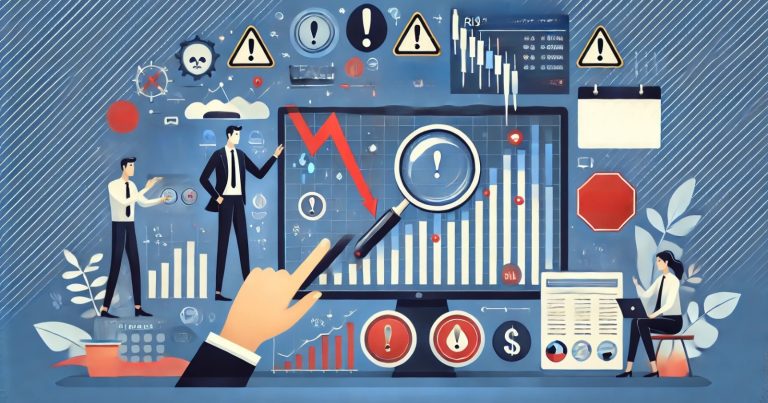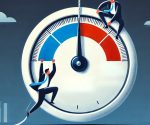Fall risk assessment is a systematic approach to determine a patient at risk of falling; primarily used in a clinical setting. The short answer it helps to identify high risk individuals and implement prophylaxis to reduce falls. Hospital, nursing home and elder care facility, fall risk assessments. Standardized tools such as the fall risk assessment scale or the morse fall risk assessment could be used by those in medical occupations to lessen the likelihood of falls and injuries. By assessing the patients effectively, the safety of the patients is guaranteed, and healthcare outcomes are improved significantly.
Fall Risk Assessment Definition
Fall risk assessment is an evaluation process determining an individual’s fall risk. Risk factors are estimated using various tools and methods, including mobility issues and medical and environmental hazards.
Where is Fall Risk Assessment Used?
Hospitals screen patients or patients who are screened after surgery or with impaired mobility to prevent falls. Nursing homes employ these assessments to protect elderly residents from falls. Slippery or uneven surface workplaces have ongoing assessments to ensure employees are safe. Homes must also be modified for people with limited mobility to minimize fall risk. FRA is an efficient practice for accident prevention that helps provide safety and well-being.
Purpose of Fall Risk Assessment
Fall risk assessment is conducted to detect individuals who are highly at risk of falling so that adequate measures are taken for their safety. Falls can result in serious injury, loss of independence, and higher medical bills. An effort to prevent falls translates into better health outcomes and a lower burden on medical institutions.
- Prevents Injuries: Falls can result in fractures, head trauma, and decreased mobility. Quick diagnosis allows for preventative action. Early steps enable a more effective improvement and recovery.
- Reduces Hospital Stays and Costs: It also reduces the time you spend in the hospital for fall-related injuries, which can lengthen your stay and costs. It saves both patients and healthcare institutions money. Reduced medical bills allow greater financial stability for families.
- Improves Patient Safety: Ensures the right care for high-risk and elderly patients. Assists in facilitating healthcare with precautionary measures. Fewer complications in the medical field.
- Enhances quality of life: Alleviates anxiety and fear of falling. The final benefit is orchid strains, which can help people more freely by reducing fall risk. Insecurity reduces confidence in daily activities.
- Encourages Sustained Wellness: People can remain healthy and active longer if falls are prevented. With routine examinations and safety precautionary measures, most people can perform daily activities without limitation or worry of being seriously hurt. Taking a preventative stance towards falling benefits both mental and physical health.
Process of Fall Risk Assessment
A fall risk assessment is the analysis and implementation of a person’s risk of falling, and the precautionary measures that should be taken. While doctors use standardized tools and patients’ histories to assess risks.
Collect Patient History
Evaluating a patient’s medical conditions, medications, and history of falls can identify the main risk factors. Some medications, chronic diseases, and past falls make falls more likely. A thorough history helps providers tailor individual risks and a personalized prevention plan. The literature shows that early assessment reduces complications and improves patient safety.
Conduct Physical Examination
A physical exam tests muscle strength, balance and how well someone can walk to see if they have limited mobility. Weakness of the muscles, poor coordination and balance, and difficulty in walking all make falls more likely. Medical professionals look for problems, such as dizziness or stiffness of the joints, that would interfere with movement. Recognizing physical limitations early helps people intervene before injuries or mobility worsens.
Use a Fall Risk Assessment Scale
Tools to identify fall risk, such as the morse fall risk assessment, help to quantify fall risk. They take into account things like history of falls, mobility, mental status, and medications. This risk score enables health care providers to recognize individuals at high risk and implement safety measures to prevent falls.
Environmental Assessment
Building a safe environment makes a tremendous positive impact on fall risk. Recognizing slips, including wet floors, uneven surfaces, and poor or insufficient lighting. Healthcare professionals recommend adding grab bars, non-slip mats, and better lighting to increase safety. Managing your environment allows seniors and high-risk people to get around safely and confidently.
Develop a Prevention Plan
Always talk with your doctor about the best way to set up a personalized fall prevention plan that includes mobility devices, certain physical movements, and safety measures the patient can follow. Resistance exercises improve balance, and balance aids such as walkers improve stability. With your knowledge of what specific tasks and attention to lifestyle changes in one’s home promote long-term prevention of falls that greatly affect quality of life, doing so will positively benefit not just the patient, but family and friends around them as well.
Educate Patients & Caregivers
You can’t prevent falls without education. Healthcare providers educate patients and caregivers about protective measures, medication regimens, and possible home adaptations. Instructors provide proper techniques for standing, walking, and using assistive devices, which can help reduce fall risks. Knowledgeable caregivers are critical in helping create a safe and nurturing environment.
Reassess Periodically
Reassessing fall risk regularly keeps maintaining the continuous improvement of safety. When medical conditions evolve, imposing new risks, and prevention strategies must be revised. Healthcare providers, at regular intervals, conduct risk assessments to update safety plans, suggest additional preventive measures, and reinforce patient education. Continuous monitoring is essential for long-term fall precautions and improves patient health.
Fall Risk Assessment Example
Fall risk can be assessed utilizing institution and environmental-specific criteria. Fall risk assessment examples across industries using fall risk assessment mitigate sequential accidents & promote safety. Here are two fall risk assessment examples showing how risk assessments are completed.
Example 1: Hospital Setting
Older patients in a hospital setting are overall at significantly greater risk of falling because of weakness, medications, and mobility problems. A 75-year-old woman hospitalized for pneumonia had her fall risks evaluated. She was on arthritis medication and sleeping pills and had trouble with balance. Her healthcare staff classified her as high risk based on the morse fall risk assessment. Measures were implemented to prevent falls, such as bed alarms, non-slip socks, and supervision. These steps not only generated a safe environment for her during her twice-daily hospitalization, which avoided any further injuries, but also improved the quality of patient care at our institution.
Example 2: Workplace Fall Risk Assessment
Although falls can occur in nearly any setting, workplace fall hazards are present, particularly in manufacturing and industrial sites with slippery surfaces, inadequate lighting, and insecure machinery and equipment. A warehouse manager evaluated dangers in an industrial workplace where workers operated on high platforms. Key dangers were documented via hazard identification, employee interviews, and fall risk assessment forms. They implemented safety measures like anti-slip flooring, safety harnesses, and employee training. Consequently, workplace slips and falls were avoided at work, which helped maintain worker safety and cut from work-related incidents.
Examples of Slips, Trips, and Falls Risk Assessment in Workplaces
To guarantee safety, businesses and places open to the public have to evaluate the risks of slipping, tripping, and falling. Wet supermarket floors can lead to slips and very serious injuries. Disturbances in public areas of sidewalks pose tripping challenges to pedestrians. Office clutter leads to falls of employees.
Conducting risk assessments and implementing preventive measures such as warning signs, floor cleaning, and proper housekeeping minimizes accidents. Taking initiative in safety keeps employees and clients safe and sound.
Relevance to ACCA Syllabus
Understanding risk, including fall risk, is a very important part of risk management and governance, including Strategic Business Leader (SBL) and Audit and Assurance (AA) in the ACCA syllabus. It allows ACCA experts to evaluate the financial, operational, and compliance risks of business failures, fraud or income statement fraud. Suffice it to say that risk mitigation strategies like internal controls, regulatory compliance and fraud prevention are imperative to business sustainability.
Fall Risk Assessment ACCA Questions
Q1: Please tell me in a few sentences what the main objective behind the fall risk assessment in corporate governance?
A) To recognize and eliminate risks that can cause failures in the business
B) to assess only monetary performance metrics
C) Providing operational costs with no strategic advantage
D) To do away with internal audits
Ans: A) To recognize and eliminate risks that can cause failures in the business
Q2: Which of the following is NOT a major component of fall risk assessment?
A) Financial stability
B) Operational efficiency
C) Regulatory compliance
D) Employee job satisfaction
Ans: D) Employee job satisfaction
Q3: How do businesses limit the risk of financial fallouts?
A) Through appropriate internal controls and risk management frameworks
B) But financial reporting standards were ternately neglected
C) By ordering restrictions on financial disclosures to investors
D) To prevent outside audits
Ans: A) Through appropriate internal controls and risk management frameworks
Q4: How important is corporate governance in terms of risk assessment in fall?
A) To uphold good business behaviour by ensuring adherence to the laws
B) Structuring unstructured decision making, voicing out the operational risks
C) … increasing opaqueness in financial disclosure
D) Blocking shareholders from evaluating corporate risk
Ans: A) To uphold good business behaviour by ensuring adherence to the laws
Q5: Why is financial stress testing used in fall risk assessment?
A) It assists in judging how able a company is to weather economic wynd and financial headwinds
B) It ensures profit in any market scenario
C) Competition analysis is no more
D) Deemphasizes the importance of strategic planning
Ans: A) It assists in judging how able a company is to weather economic wynd and financial headwinds
Relevance to US CMA Syllabus
US CMA Syllabus for Fall risk assessment in Strategic Management, Risk Analysis , and Internal Controls Management accountants need to assess the potential financial risks, operational inefficiencies, and strategic misalignments that could lead to business failures. It is critical in risk-based decision-making and corporate performance management.
Fall Risk Assessment CMA Questions
Q1: Whether or not they’re financially insolvent, what’s a company’s best bet if it wants to offset the risk of ending up in bankruptcy?
A) Streamlining internal processes and continuous monitoring of key risks
B) Undermining indicators of an economic downturn
C) Reducing the likelihood of successful financial planning
D) Failing to perform cost-benefit calculus
Ans: A) Improvements to internal procedures and continuous measurement of key risks
Q2: What is ERM’s role in fall risk?
A) By identifying, assessing and responding to the risks that threaten business sustainability.
B) By focusing exclusively on the accuracy of financial reporting
C) By reducing the roles of compliance officers in the governance
IV) They scale away the need for risk-based decision making
Q. B) By identifying, assessing and communicating risks that could impact the stability of a businessAns: A)
Q3: A sign of financial distress in businesses is?
A) Reduced profit margins and expensive debt
B) Expanding into new markets
C) Strengthening employee engagement activities
D) Reducing expenditures on research and development
Ans: A) Declining profits and high debt levels
Q4: What is an important element in the management of fall risk?
A) Scenario Planning and Financial Projections
B) Disregarding risk factors and charging after profitability
C) Decreasing transparency in the financial statements
D) Removing external stakeholders involvement
Ans: A) Scenario Planning and Financial Projections
Q5: How do Key Risk Indicators (KRIs) factor into the assessment of fall risk?
A) They enable businesses to monitor early indicators for potential threats
B) They remove the need for corporate governance
C) They downplay the role of financial planning
D) They will protect all businesses from ever losing profits
Ans: A) They enable businesses to monitor early indicators for potential threats
Relevance to US CPA Syllabus
In the US CPA syllabus, fall risk assessment falls under Audit & Attestation (AUD) and Business Environment & Concepts (BEC). Corporate accountability demands that CPAs identify risks of undue influence, fraud, and compliance failures in financial reporting.
Fall Risk Assessment CPA Questions
Q1: What is the significance of fall risk assessment in external auditing?
A) It reminds auditors of the risks of material misstatement in financial statement reporting
B) Ensures businesses will be financially viable
D) It makes forensic accounting unnecessary
D) It concerns solely with tax compliance
Ans: A) AIt reminds auditors of the risks of material misstatement in financial statement reporting
Q2: What is the important element of understanding exposure to financial risk?
A) Liquidity ratios and solvency analysis
B) Employees in the organization
C) Programs to train employees.
D) The company’s social media feed
Ans: A) Liquidity ratios and solvency analysis
Q3: What key function do internal controls serve in assessing falls risks?
A) To discourage fraudulent practices and assure truthful financial statements
B) To eliminate the competition in the industry
C) In order to decrease the costs for marketing
D) To make operational inefficiencies even worse
Ans: A) To discourage fraudulent practices and assure truthful financial statements
Q4: How the Sarbanes-Oxley Act (SOX) would relate to fall risk assessment?
A) By forcing companies to strengthen internal controls and financial reporting standards
B) By removing regulatory compliance requirements
C) Discounting non-profitable metrics
D) Deter investor engagement
Ans: A) By forcing companies to strengthen internal controls and financial reporting standards
Q5: What is the relevance of financial ratio analysis in fall risk assessment?
A) It is applied to evaluate a business’s financial stability and detect preliminary indicators of forthcoming failure
B) Keeping all the businesses in black.
D) It could generic comparable to sociorporate governance policies
D) It devalues the importance of strategic decision making
Ans: A) Financial ratio analysis is used to gauge a company’s financial state and find early indications of potential collapse.
Relevance to CFA Syllabus
The CFA curriculum covers Corporate Finance, Risk and Financial analysis, fall risk assessment is one of the key topics. To make informed investment decisions, CFA professionals must review the financial risk exposure, investment risks, and corporate governance failures they face.
Fall Risk Assessment CFA Questions
Q1: the first question we have here is how does financial leverage, how does that impact a fall risk assessment?
A) High leveraged is also leave firms vulnerable to the economic recession as the default increases the risk of default.
B) That lowers the risk of corporate financial distress
C) It ensures strong liquidity positions across all businesses
D) Is not relevant to the exposure to financial risk
Ans: A) The presence of high leverage exposes the company to the economic effect of their default thus, making them even more likely to default.
Q2: What does this letter tell us about a sign of corporate financial distress?
A) Diminishing cash flows along with high levels of debt
B) Heightened confidence from investors
C) Expansion into new markets
D) Heavy expenditure on research and development
Ans: A) Diminishing cash flows along with high levels of debt
Q3: How can investors determine fall risk within financial markets?
A) Through examination of company financial statements, debt ratios, and governance structures
B) By considering only movement in the price of the stock in the short term
C) Ignoring macroeconomic trends
D) By minimizing the significance of risk assessment models
Ans: A) Through examination of company financial statements, debt ratios, and governance structures
Q4: What is the significance of stress testing in risk management?
A) It assists in the analysis of how companies react during difficult financial periods
B) It keeps the financial statements unchanged in a crisis
C) It takes away all the corporate financial risks
D) It limits businesses to making tactical changes
Ans: A) It assists in the analysis of how companies react during difficult financial periods
Q5: How do corporate governance practices mitigate the risk of falling?
A) Improving transparency, accountability, and regulatory compliance
B) By weakening protections for investors
C) Through the removal of financial reporting standards
D) In prioritizing only short-term earnings
Ans: A) Improving transparency, accountability, and regulatory compliance


